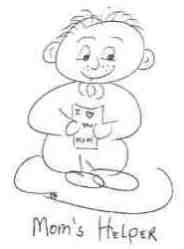One thing about being a seasoned citizen is that I now take time to think about things I never paid much attention to when I was young. Youthful times are filled with so many different experiences, distractions, and day-to-day happenings the idea to dwell on any specific thought with depth of analysis is too time consuming and bland. Usually, one is too busy and pre-occupied with daily routine duties and predetermined responsibilities. By the time awareness sets in, one is usually conscripted to school, studies, homework and after-school chores. When free time is available, contemplation is way down on the list of preferred activities. With adulthood comes a myriad of additional responsibilities and the pace of daily living, at times, is a blur. Often exhausted at the end of the day, one seeks restful sleep rather than cognitive review. As tired as we are, however, we automatically savor certain moments from the day just ending. Doing so, begets the question: What is the best part of the day? What number from the allotted 1440 minutes serves to ease the mind, comfort the soul, and energize the spirit?
Regardless of age, status, gender, or circumstance each of us have moments that define our days. Take your own personal inventory and enjoy the review of those special parts of a day that bring satisfaction, comfort, accomplishment, peace of mind, and prayerful thanks. For me, each second is the best part of the day. I view each day as a gift with intention to enjoy and savor every part thereof.
Near the top of my list are the moments in the wee small hours of the morning, when the night is wrapped around us like a warm comforter. Familiar sounds of appliances tease the silence and provide a background for those who share moonlit starry skies and sleep less soundly. Numerous times during the year, the sound of rain against window panes and roofs gives one a feeling of tranquility and encourages reflection. When skies are clear there are the moments of sunrise and sunset—dawn and dusk. Looking at the beginning or ending of a day with a cup of coffee or tea; at the breakfast table or on the porch swing is a gift within a gift.
Maybe the best part of the day is saying night prayers or reading bedtime stories with your children, delivering a hug and goodnight kiss to loved ones. The best part of the day can be at work with colleagues and co-workers; interacting with groups or savoring aloneness. Sometimes there are several best parts of the day--separated moments and connected moments. During the week, the best part of the day comes at different times: prayerful contemplation, noisy gatherings, family activities, romantic interludes, public, private, and all occasions in between. The best part of the day can be watching a favorite TV show or sporting event relaxing in your favorite chair or comfortable on your couch potato sofa. The best part of the day can also be listening to a ballgame on a delicious summer afternoon while working in the yard, or the soundtrack of warm spring nights on a glider inside a screened porch or patio. What is the best part of the day? (Your Answer Here.)
The best part of the day is largely dependent on one’s personal attitude, philosophy, and perspective. How vigorous does one pursue the potential of each day? To what degree does one dispense their energy, effort, goodness, and kindness in order to harvest the bounty of each day? Each day comes from the factory like a banquet—a bounty brimming with promise, opportunity, and a chance to do better. The best part of the day—the dessert of our efforts is achieved through individual and collective offerings of faith, hope, and charity.
The best part of the day can be what you want it to be. The way one uses the gift of each day—86,400 seconds, 1440 minutes, or 24 hours will determine the quality of the “Best Part of the Day.”

